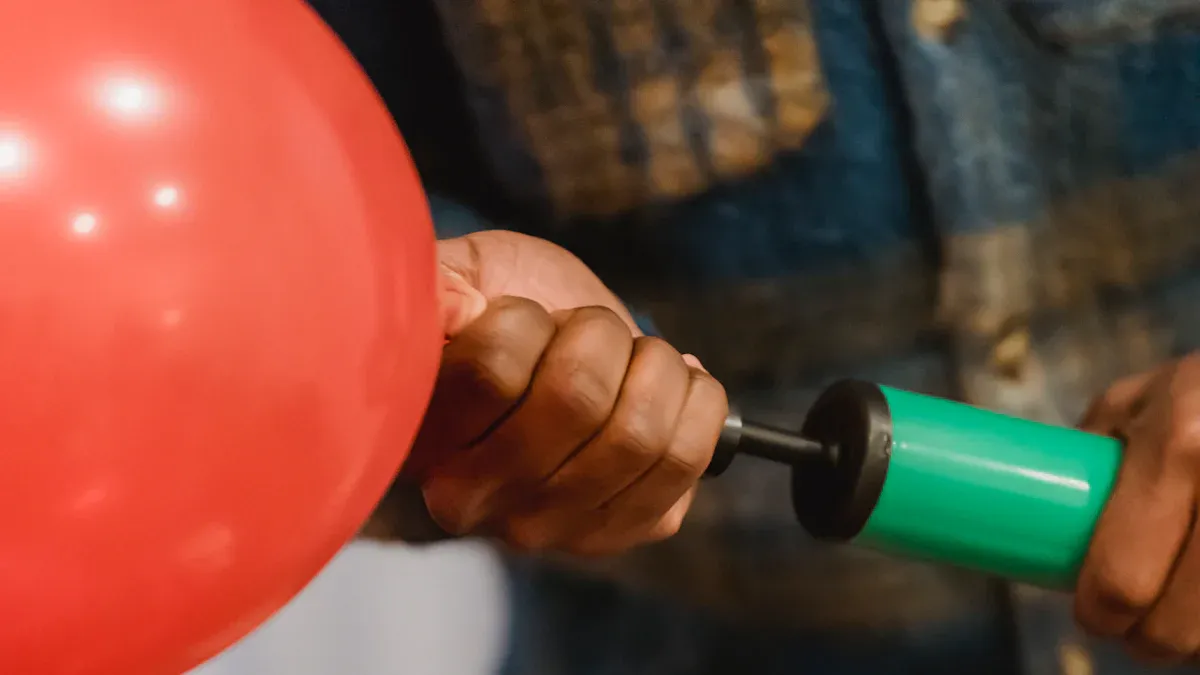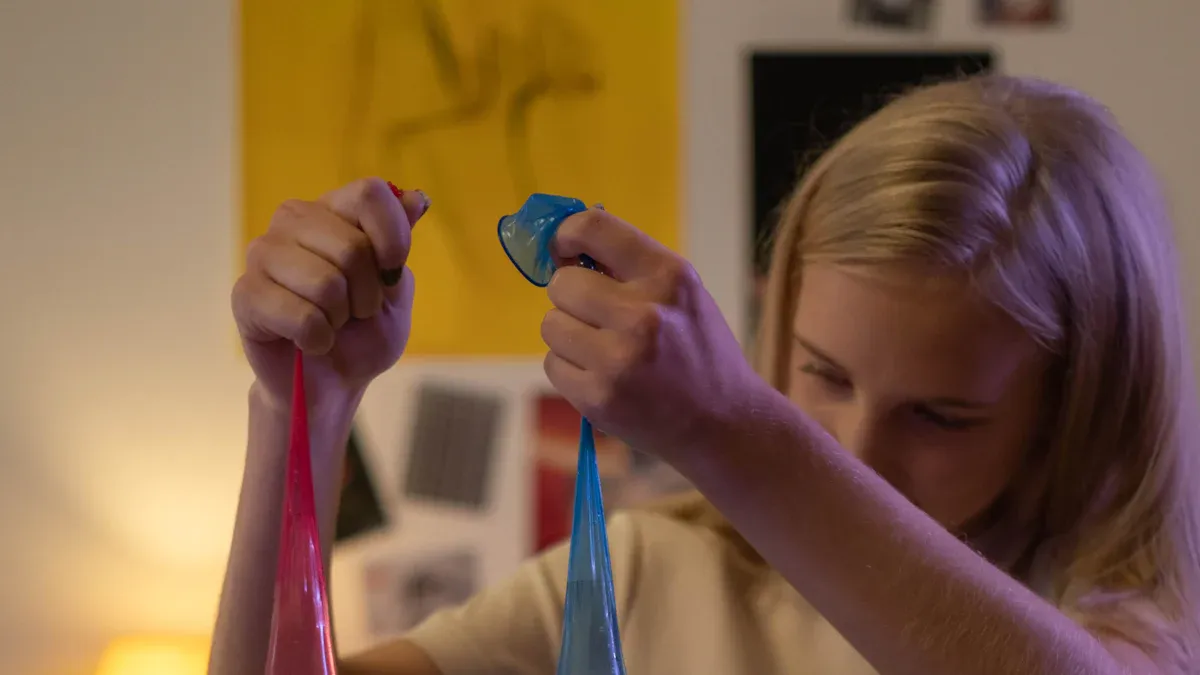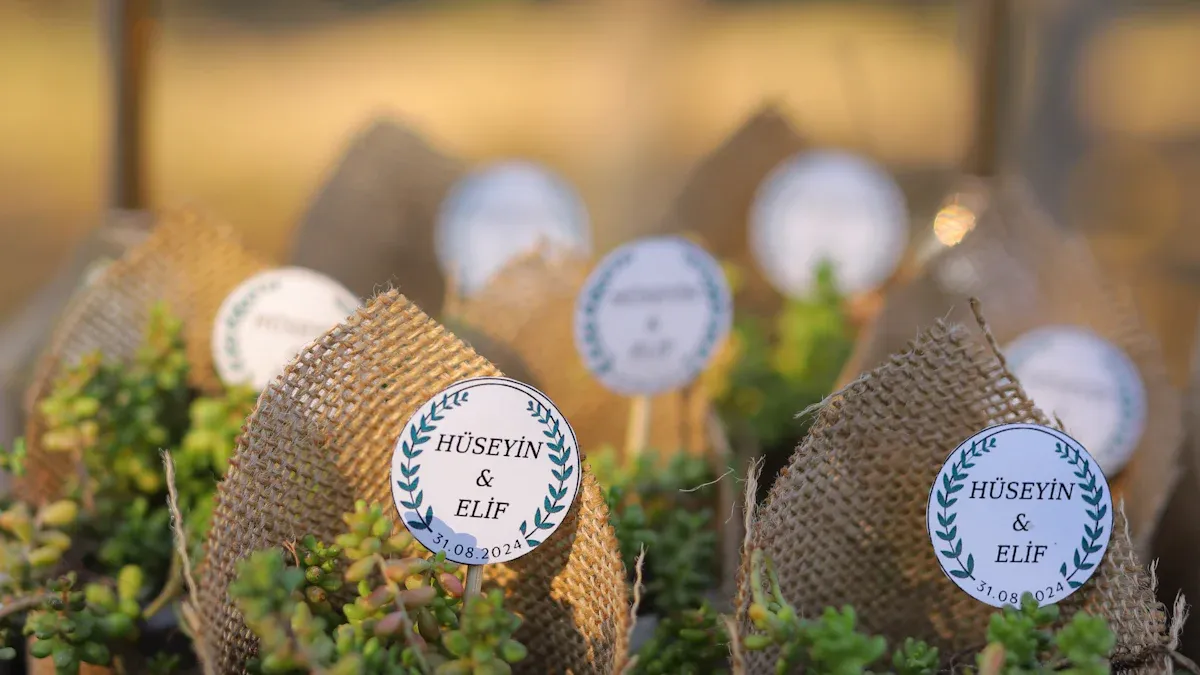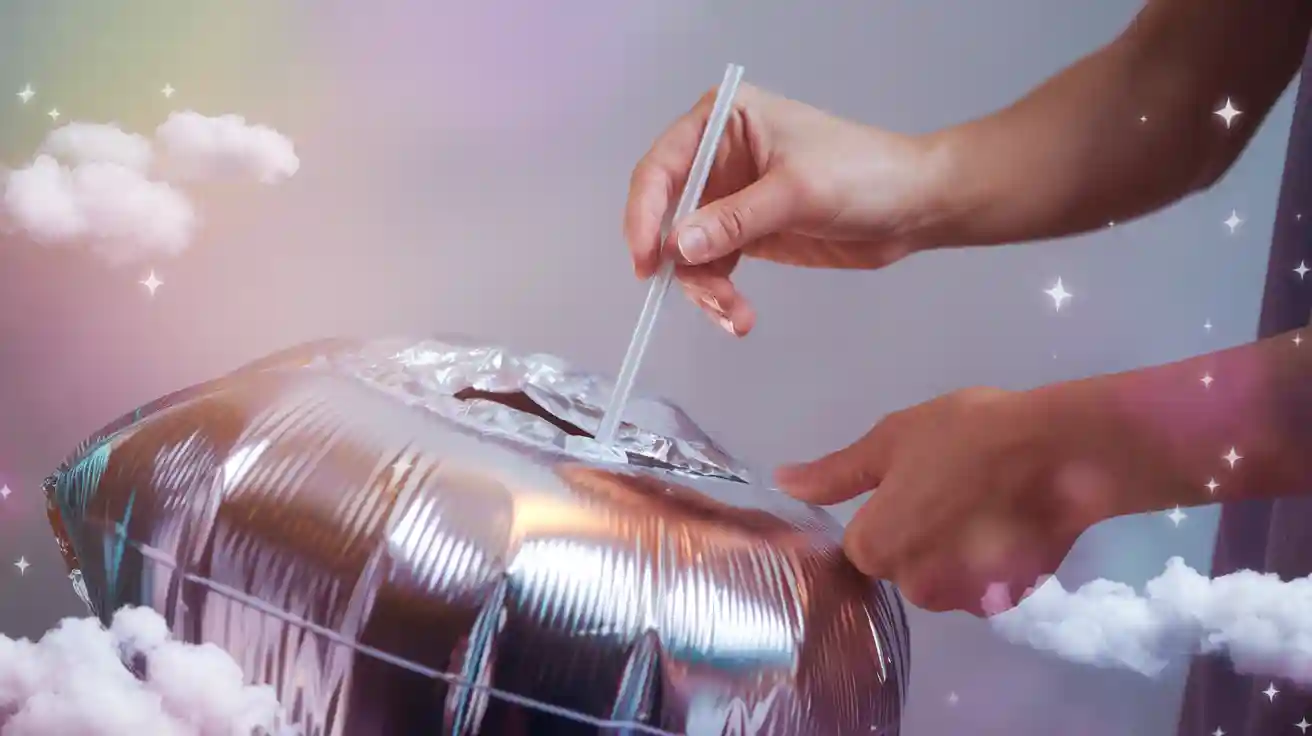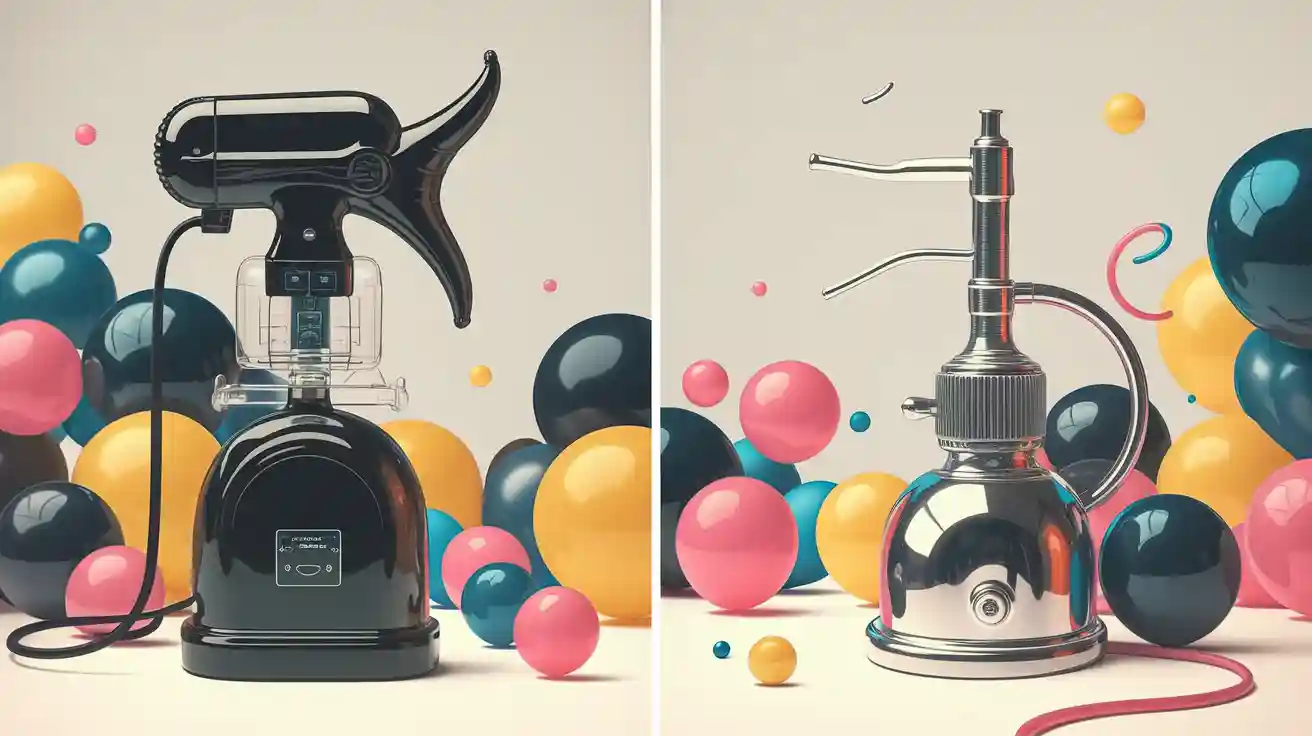
Planning a party? Aluminum balloons are perfect for adding sparkle and fun. These shiny and strong balloons are loved for party decorations. They make any celebration look more exciting and special. Did you know the aluminum foil balloon market was worth $1.2 billion in 2023? It is expected to grow by 7.5% every year! Their popularity has grown because of DIY party trends. People enjoy making unique and custom decorations. If you want to know how to inflate or blow up balloons, we can help!
🎈 Tip: Blow up balloons the right way to make them last longer and look great at your party.
Key Takeaways
Use a straw or air pump to blow up balloons. This keeps them full and looking nice for your party.
Pick self-sealing balloons to make inflating them super easy. They hold air without needing to tie knots.
Look for leaks by checking the balloon carefully. Use tape to fix small holes and keep them looking great.
Use helium if you want the balloons to float. Make sure the tank is safe and balloons are the right size.
Save balloons by letting the air out and storing them. This helps you save money and use them again later.
How to Blow Up Balloons Manually with a Straw
Materials You’ll Need
Before inflating balloons by hand, gather a few basic items. You don’t need special tools, just things you likely already own. Here’s what you’ll need:
A straw: Pick a strong plastic or reusable straw. It must fit tightly into the balloon’s valve.
Aluminum balloons: Choose self-sealing ones. They’re easier to blow up and don’t need knots.
Tape (optional): Use tape to secure the straw if it wobbles.
Patience: Blowing up balloons by hand takes time but is rewarding!
Did you know nylon is a top material for making balloons? It’s tough and flexible, perfect for handling high pressure. Polyester is also becoming popular because it resists breaking, keeping balloons safe during inflation.
Step-by-Step Guide
Blowing up aluminum balloons with a straw is easy. Follow these steps to do it fast:
Insert the straw: Gently push the straw into the balloon’s valve until it stops.
Start blowing: Take a big breath and blow into the straw. Watch the balloon grow.
Check the shape: Stop blowing when the balloon looks fully round. Don’t overfill, or it might pop.
Remove the straw: Slowly pull the straw out. The self-sealing valve will trap the air inside.
🎈 Pro Tip: Blowing up many balloons? Take short breaks to avoid dizziness.
Tips to Prevent Air Leaks
To keep balloons inflated, seal them properly. Use these tips to avoid air escaping:
Use self-sealing balloons: These lock in air without extra work.
Check the valve: Make sure it’s clean and clear before inserting the straw.
Don’t overinflate: Too much air can weaken the balloon and cause leaks.
Secure the straw: If the straw is loose, tape it down while inflating.
Follow these tips, and your balloons will stay full and look great for your party!
How to Inflate Foil Balloons Using an Air Pump
Choosing the Right Air Pump
Picking the right air pump makes inflating foil balloons quick and easy. You can choose between manual hand pumps and electric air pumps. Manual pumps are portable and budget-friendly, but they require more effort. Electric pumps, on the other hand, save time and energy, especially if you’re inflating a lot of balloons.
When shopping for an air pump, look for one with a nozzle that fits snugly into the balloon’s valve. A tight fit prevents air from escaping during inflation. If you’re hosting a big event, consider an electric pump with multiple nozzles to inflate several balloons at once.
💡 Tip: Check the pump’s compatibility with foil balloons. Some pumps are designed only for latex balloons and may not work well with foil ones.
Step-by-Step Instructions
Using an air pump to inflate foil balloons is simple. Follow these steps to get it done in no time:
Attach the nozzle: Secure the pump’s nozzle to the balloon’s valve. Make sure it fits tightly.
Start pumping: If you’re using a manual pump, push and pull the handle to fill the balloon with air. For electric pumps, turn it on and let it do the work.
Monitor the balloon: Watch the balloon as it inflates. Stop when it looks full and smooth. Overinflating can cause it to burst.
Seal the balloon: Once inflated, remove the nozzle carefully. The self-sealing valve will lock the air inside.
🎈 Pro Tip: Inflate foil balloons slowly to avoid damaging the seams.
Safety Tips for Using Air Pumps
Air pumps are safe to use, but a few precautions can make the process even smoother:
Avoid overinflation: Too much air can weaken the balloon and cause it to pop.
Keep kids away: If you’re using an electric pump, make sure children don’t operate it.
Check the pump’s condition: Inspect the pump for any damage before use. A faulty pump can lead to accidents.
Use in a ventilated area: Electric pumps can get warm during use, so ensure proper airflow around them.
By following these tips, you’ll inflate foil balloons safely and efficiently, leaving you more time to enjoy your party!
How to Inflate Foil Balloons with a Helium Tank

Using a helium tank is one of the quickest ways to blow up balloons and make them float. It’s perfect for creating eye-catching decorations that hover in the air. Let’s dive into the details to help you get started!
Selecting the Correct Helium Tank
Choosing the right helium tank is crucial for a smooth inflation process. Tanks come in different sizes, so think about how many balloons you need to fill. For a small gathering, a disposable tank from a party store works well. If you’re hosting a larger event, consider renting a refillable tank.
Safety is key when handling helium tanks. Always check that the tank is certified and in good condition. Look for a label or stamp indicating it meets safety standards. If you’re unsure, ask the supplier for guidance.
💡 Tip: Store the tank in a cool, ventilated area. Avoid placing it near heat sources or direct sunlight, as this can increase pressure inside the tank.
Step-by-Step Guide to Inflate Balloons
Inflating foil balloons with a helium tank is easier than you might think. Follow these steps to do it safely and efficiently:
Set up the tank: Place the helium tank upright on a stable surface. Secure it with a strap or chain to prevent tipping.
Attach the nozzle: Connect the inflation nozzle to the tank’s valve. Make sure it’s tightly secured to avoid leaks.
Prepare the balloon: Hold the neck of the balloon with both hands. Stretch the opening slightly and slide it onto the nozzle. Roll the neck down the nozzle to secure it.
Inflate the balloon: Gently press the nozzle to release helium. Hold the balloon in place as it fills. Stop when the balloon looks smooth and full. Overinflating can cause it to burst.
Seal the balloon: Pinch the neck of the balloon and carefully remove it from the nozzle. The self-sealing valve will lock the helium inside.
🎈 Pro Tip: Use a trolley to move heavy helium tanks instead of lifting them. This reduces the risk of injury.
Why Some Balloons Don’t Float with Helium
Ever wondered why some foil balloons don’t float, even with helium? The answer lies in their size and weight. Small balloons or those with heavy decorations may not have enough lift to float. Helium is lighter than air, but it can only lift so much weight.
To ensure your balloons float, choose ones that are at least 18 inches in diameter. Avoid adding heavy embellishments like tassels or ribbons. If you’re decorating with smaller balloons, consider using air instead of helium.
💡 Note: Temperature can also affect helium balloons. Cold air causes helium to contract, making balloons appear deflated. Move them to a warmer area, and they’ll perk up again!
By following these tips, you’ll know exactly how to inflate foil balloons with helium and make them float beautifully at your party.
Troubleshooting Common Issues
Why Won’t My Balloon Inflate?
If your aluminum balloon refuses to inflate, don’t worry—it’s a common issue. The most likely culprit is a blocked valve. The valve, which seals the air inside, can sometimes stick together or get clogged with debris. To fix this, gently massage the valve with your fingers to loosen it. Then, try inserting the straw or pump nozzle again.
Another reason could be a small tear or hole in the balloon. Even tiny leaks can prevent inflation. Hold the balloon up to a light source and inspect it carefully. If you spot a hole, don’t toss the balloon just yet—you can fix it!
💡 Tip: Always check the straw or nozzle for damage. A bent or cracked tool might not create a proper seal with the balloon’s valve.
How to Fix Small Leaks in Aluminum Balloons
Small leaks can be frustrating, but they’re easy to fix with the right approach. First, you’ll need to locate the leak. Here are two simple methods:
Spray a light mist of water over the balloon and gently squeeze it. Watch for bubbles forming under the water layer.
Submerge the balloon in a bowl of water and look for tiny bubbles escaping from the leak.
Once you’ve found the leak, dry the area thoroughly. Then, cover it with a piece of clear tape, like transparent or masking tape. Press the tape down firmly to ensure it sticks well. This quick fix will keep your balloon inflated for the rest of your party!
🎈 Pro Tip: Avoid overinflating balloons, as this can weaken the seams and cause leaks.
Can Aluminum Balloons Be Reused?
Yes, you can reuse aluminum balloons! These balloons are designed to be durable, so you don’t have to throw them away after one use. To reuse them, carefully deflate the balloon by inserting a straw into the valve. Gently press the balloon to release the air. Once it’s flat, fold it neatly and store it in a cool, dry place.
When you’re ready to use the balloon again, simply inflate it as you did the first time. Keep in mind that reused balloons might not look as crisp as new ones, but they’ll still add charm to your party.
💡 Note: Avoid storing balloons in direct sunlight or near sharp objects to prevent damage.
By following these tips, you’ll save money and reduce waste while keeping your party decorations looking fabulous!
Blowing up aluminum balloons is simple and fun. With basic tools and easy steps, you can make amazing decorations quickly. Whether you use a straw, air pump, or helium tank, each way works great.
Why are aluminum balloons awesome?
They last long and can be used again.
Self-sealing valves make blowing them up super easy.
They bring sparkle and excitement to any party theme.
🎉 Pro Tip: Try inflating a few balloons before your party to get better at it.
Use these ideas, and your party will look amazing with shiny, long-lasting balloons!
FAQ
How can I tell if my aluminum balloon is full?
Look at the balloon’s shape. It should be smooth and round. Stop inflating when it feels firm but not too tight. If you overfill it, the balloon might pop. Watch closely as you inflate.
🎈 Tip: Inflate slowly to protect the seams from breaking.
Can I use air instead of helium for foil balloons?
Yes, you can! Air works fine for balloons that don’t need to float. Use a straw or an air pump to fill them. Helium is only needed if you want the balloons to float in the air.
How should I store unused aluminum balloons?
Keep them flat in a cool, dry spot. Avoid sunlight or sharp things that could damage them. Fold them neatly to save space. Storing them well keeps them ready for future use.
Why do helium balloons shrink in cold weather?
Cold air makes helium shrink, so balloons get smaller. Move them to a warmer place to make them expand again. Helium reacts more to temperature changes than air, so plan for outdoor events carefully.
💡 Note: Warm places help helium balloons stay full longer.
Can aluminum balloons be recycled after use?
Most aluminum balloons can’t be recycled because of mixed materials. But you can reuse them for other parties. Deflate them gently, fold them, and store them for later. Reusing balloons helps save money and reduces waste.




















